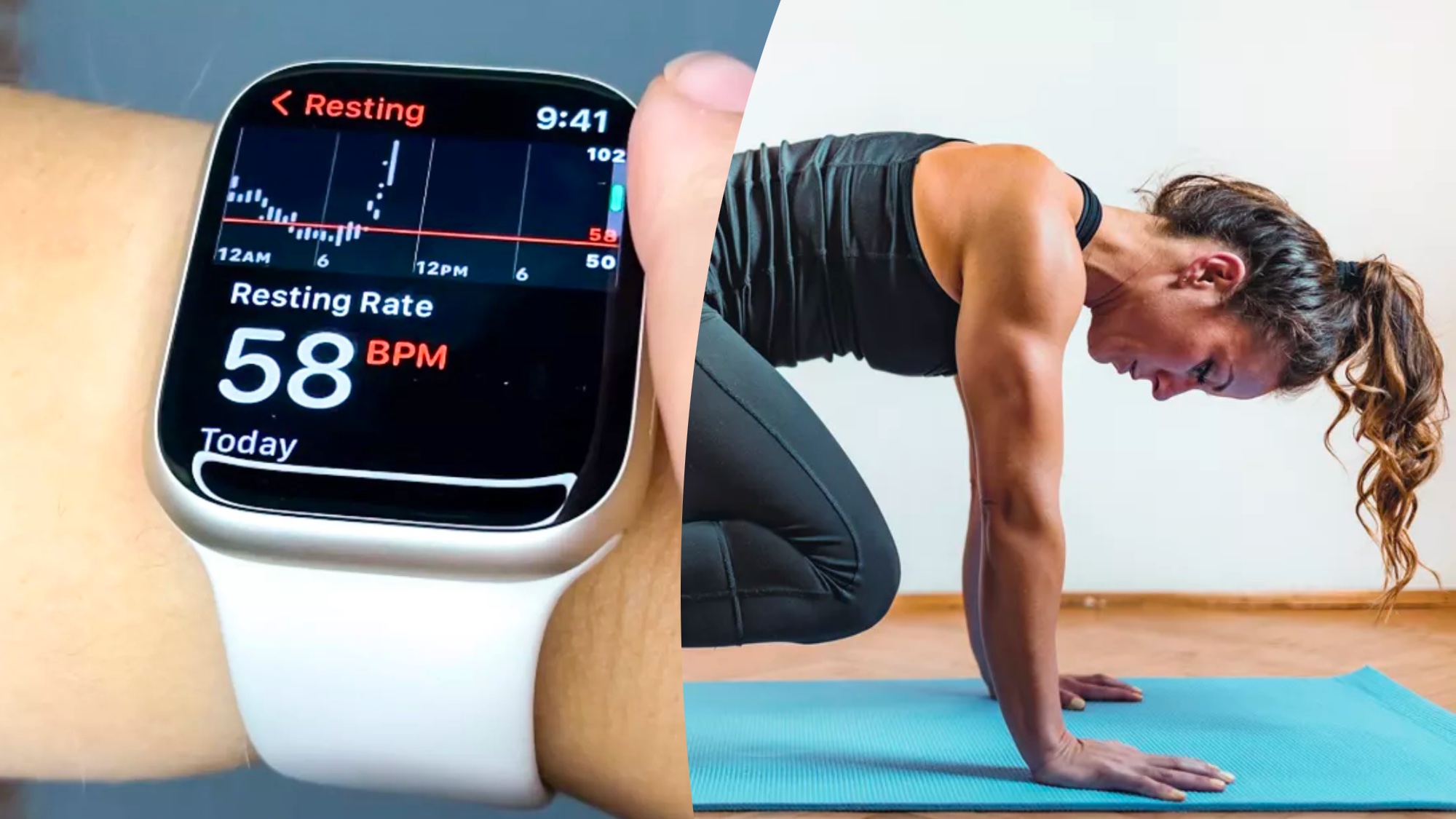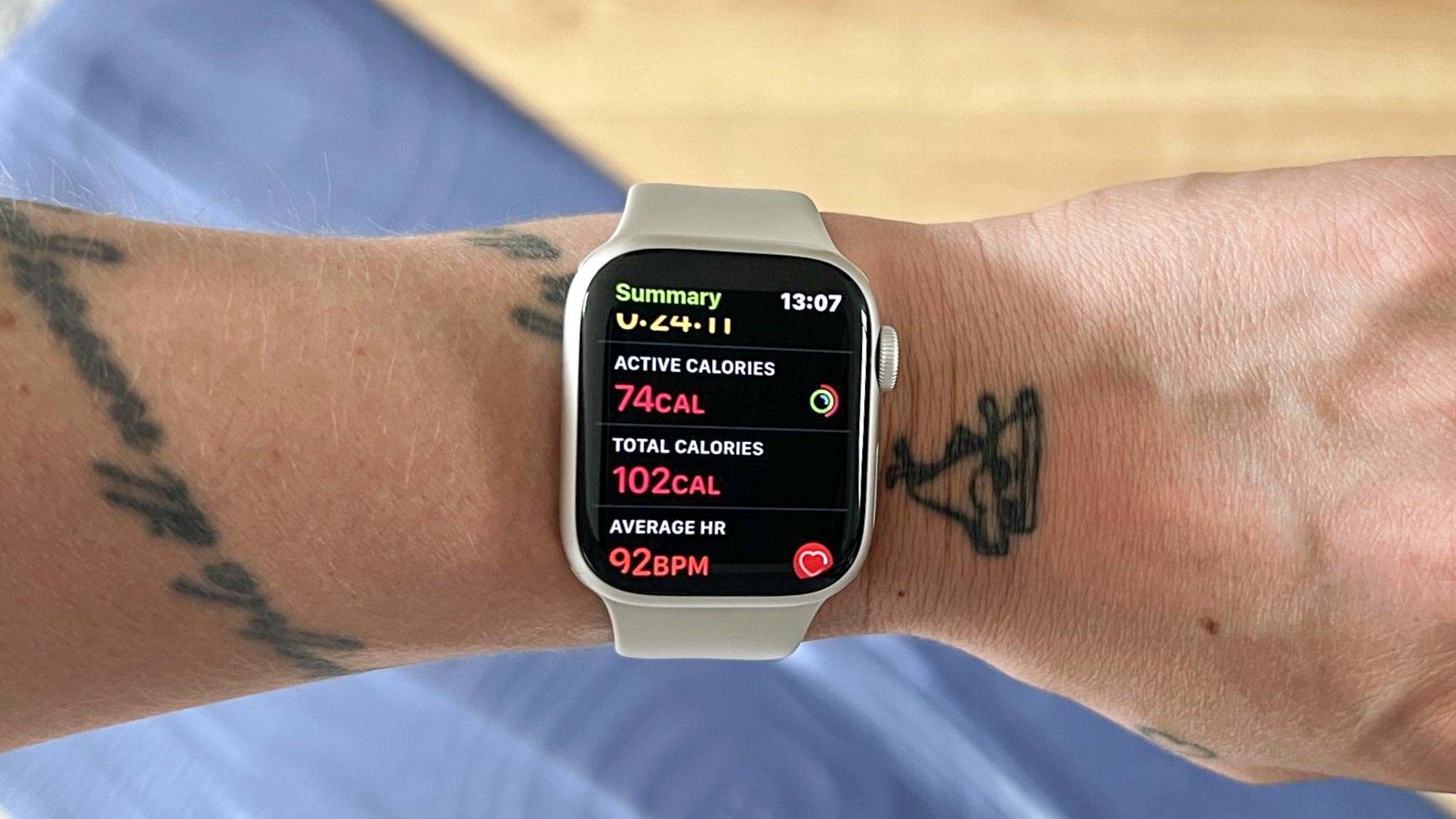
When our fitness editor put the Apple Watch Series 8 and Garmin Epix Pro head-to-head for a 300-calorie workout, I was intrigued, but not surprised, by the results. Neither of them hit the magic 300 target.
It’s a common theme. Fitness influencers and personal trainers tout high-calorie burn workouts, we do them and then even the best fitness trackers on the market throw up drastically different results to each other and the workout target.
To test it out myself, I pressed play on a 500-calorie HIIT workout on YouTube to see how many calories I “really” burned on a Apple Watch Series 7 and Oura Ring gen 3. Here’s what happened and why you should focus on other goals instead.
How to calculate calorie burn
There are several ways to calculate calories burned during a workout, but it’s hard to get an accurate read. I briefly summarize below, but to learn more, our fitness editor wore the Apple Watch Series 8 and Garmin Epix Pro for a 300-calorie workout and reveals everything you need to know.
- Calorie calculators use MET values charts to estimate how much energy a person would burn during each type of workout, but these are standardized across the board for easier comparisons.
- Fitness trackers and the best running watches track calorie burn by looking at your inputted personal details (age and weight, for example), workout type and factors like heart rate and oxygen consumption. They’ll then estimate maximum oxygen uptake (VO2 max) and expected energy expenditure.
- Chest strap heart rate monitors look at the effort it takes for an individual to do a workout based on heart rate to measure how many calories you’re likely to burn. These tend to be more accurate than fitness trackers, but most devices are still only an estimate.
So who do we believe?
It’s hard to trust how your device performs, so ideally, you’ll need to find out your basal metabolic rate (BMR) — how many calories your body requires to get you through the day — and total daily energy expenditure (TDEE), which refers to how many calories you expend in the day to help determine likely calorie burn.
You can do your math and calculate BMR and TDEE, but we recommend visiting a doctor or sports clinic to get an accurate BMR and lean body mass reading. These labs can also measure your VO2 max and maximum heart rate by hooking you to various machines.
Get instant access to breaking news, the hottest reviews, great deals and helpful tips.
I just did a 500-calorie HIIT workout — here's how many calories I burned, according to my Apple Watch

I strapped on my Apple Watch Series 7 for this 500-calorie 20-minute cardio HIIT workout with over 4 million views on YouTube.
My FiiT heart rate monitor couldn’t sync to this workout, so I used my Oura ring to compare.
- Oura ring Gen 3: 180 calories burned, average heart rate undetectable
- Apple Watch Series 7: 74 calories burned, average heart rate 92 bpm
The Oura ring stopped tracking heart rate data during the workout (this isn’t the first time I’ve had issues recording heart rate data with Oura), so we can safely assume the 180 calories burned aren’t accurate. Oura calculates daily energy expenditure using METs to express the energy expenditure and intensity of different physical activities, and I've found it to be way off in the past, which seems to be backed up by other users online.
Calories burned in both cases were nowhere near the 500 target for this workout, and my heart rate barely spiked above 100 for most of the 20-minute class. I also didn’t break a sweat and would mark my RPE (rate of perceived exertion, a popular method for personal trainers to assess intensity with clients) as around 3/10.

Although calorie burn is unique to you, and some people will find this workout harder than others, as a general rule of thumb, metabolic conditioning and HIIT workouts typically burn more calories. But 500 calories for this 20-minute session was never achievable, and I’m pretty sure this number was plucked from thin air.
All the same, I was still shocked to see just how far off my total calorie burn was.
Switching up rest-work periods and high-low intensities forces the body to work harder, improves endurance and activates a process called EPOC — Excess Post-Exercise Oxygen Consumption — which means you’ll continue burning calories after exercising.
Check out how to build a metcon workout to increase the chances of spiking your heart rate and burning calories. I also recommend brushing up on how to burn calories by switching up your daily routine using the process of NEAT (Non-Exercise Activity Thermogenesis).
But the best advice I can give is to use calorie burn as an estimate toward daily energy expenditure and focus attention on other goals — building strength, increasing muscle mass (which is more metabolically active) and most importantly, feeling good during and after workouts. Calorie burn should never really be the focus, but it's handy to get an estimate.
More from Tom's Guide
If your goal is to lose weight, you need a calorie deficit — burning more calories than you take in. Read up on it below.
- I walked 6,000 steps with the Apple Watch 8 and Fitbit Inspire 3 — here’s which was more accurate
- I don’t recommend counting calories, here’s why
- Oura Ring vs Apple Watch 8 — which is the best at sleep tracking?

Sam Hopes is a level 3 qualified trainer, a level 2 Reiki practitioner and fitness editor at Tom's Guide. She is also currently undertaking her Yoga For Athletes training course.
Sam has written for various fitness brands and websites over the years and has experience across brands at Future, such as Live Science, Fit&Well, Coach, and T3.
Having coached at fitness studios like F45 and Virgin Active and personal trained, Sam now primarily teaches outdoor bootcamps, bodyweight, calisthenics and kettlebells.
She also coaches mobility and flexibility classes several times a week and believes that true strength comes from a holistic approach to training your body.
Sam has completed two mixed doubles Hyrox competitions in London and the Netherlands and finished her first doubles attempt in 1:11.
